Why Choosing the Right Portable Cooler Matters
A portable cooler is a mobile cooling device that keeps food, beverages, or other items cold using ice, electricity, or evaporative cooling technology.
Main Types:
- Ice coolers - Traditional insulated containers using ice for cooling
- Electric coolers - Powered units with compressors that cool without ice
- Evaporative coolers - Use water evaporation to cool air (swamp coolers)
- Hybrid models - Combine multiple cooling methods
Key Considerations:
- Capacity: From 12 quarts to 100+ quarts
- Power source: Ice-only, 12V DC, AC adapter, or solar
- Temperature range: Ice coolers maintain 32-40°F; electric models range from -4°F to 68°F
- Runtime: Electric models run 10-42 hours on battery power
The wrong choice costs you money and performance. Ice coolers need constant ice replacement. Electric models without proper ventilation overheat. Evaporative coolers fail in humid climates above 60% relative humidity.
The portable cooler market offers everything from $30 basic ice chests to $1,500+ smart coolers with Wi-Fi control and dual-zone cooling. Power consumption ranges from 32 watts to 300 watts for high-capacity units.
I'm Mortuary Cooler, a national-level mortuary cooler supplier with experience in professional cooling solutions including portable cooler systems for specialized applications.
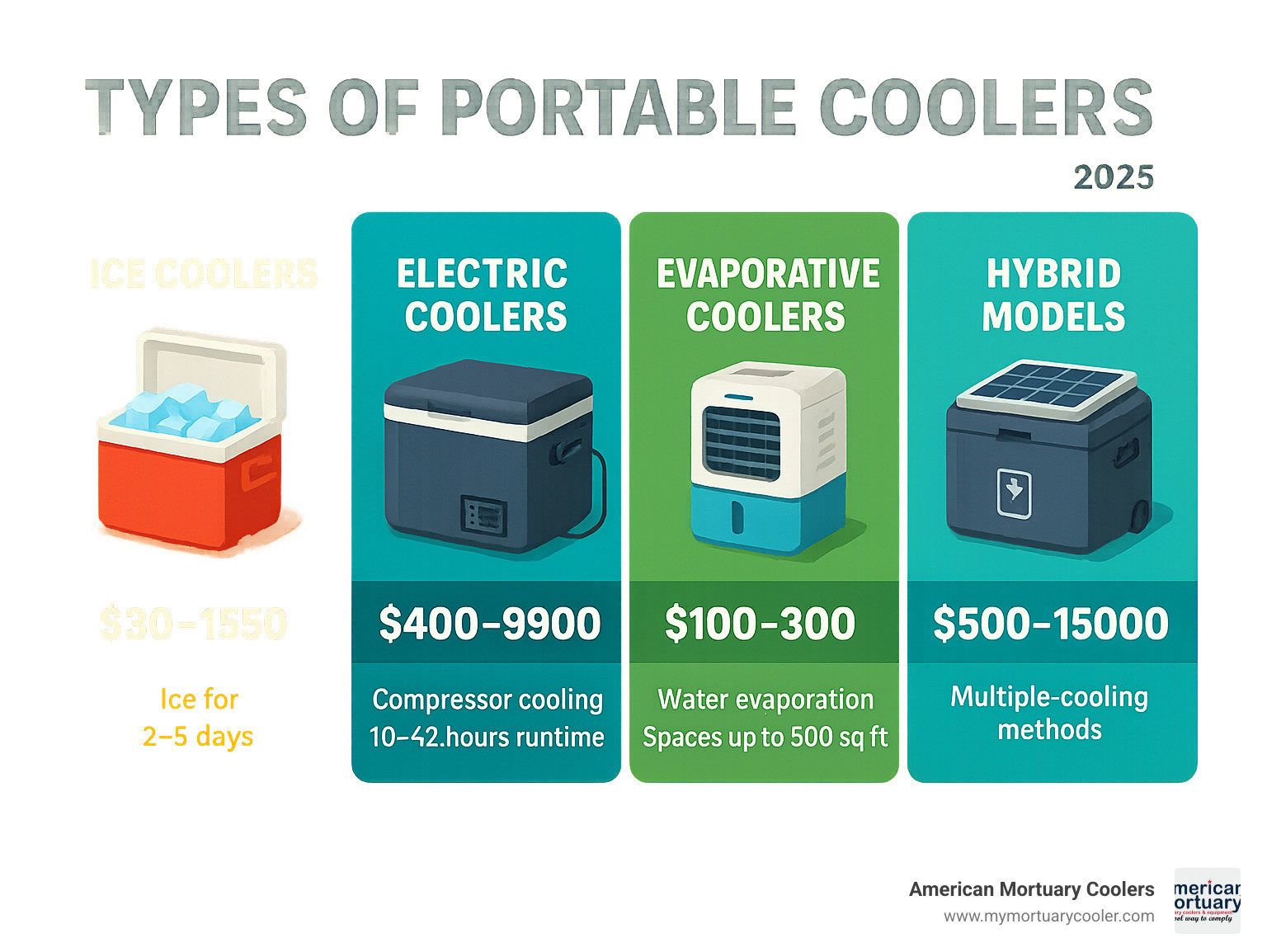
Portable cooler vocab to learn:
Why You Need This Guide
Choosing the wrong portable cooler leads to expensive mistakes. Basic ice coolers seem cheap until you're buying $20 worth of ice every two days. Electric coolers promise convenience but many users don't realize they need proper ventilation.
Common pain points:
- Size miscalculation - Buying too small or too large
- Power confusion - Not understanding 12V vs AC requirements
- Climate incompatibility - Using evaporative coolers in humid areas
- Feature overload - Paying for unused features or missing essential ones
What We'll Cover
We'll break down every type of portable cooler from basic ice chests to advanced solar-powered units. You'll learn efficiency data comparing 32-watt evaporative units to 300-watt compressor models, plus maintenance tips that extend cooler life by years.
Portable Cooler Types Explained
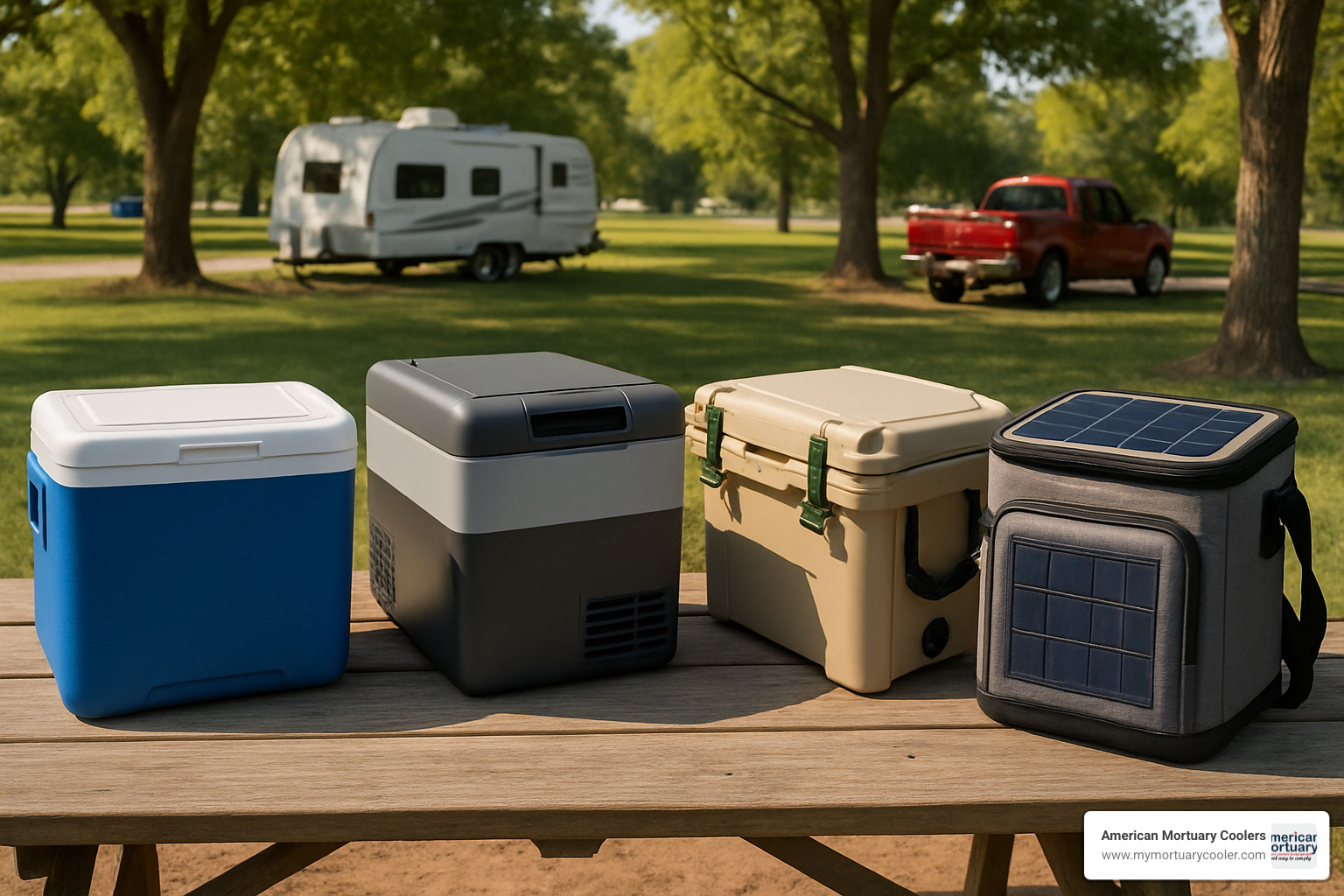
Understanding different portable cooler types saves you from buying the wrong one and dealing with melted ice or dead batteries when you need cooling most.
How a Portable Cooler Works
Ice coolers work through phase change cooling. When ice melts, it absorbs 144 BTUs of heat per pound. Thick foam insulation (rated R-10 to R-32) slows heat transfer from outside air.
Electric compressor coolers are mini-refrigerators on wheels. A compressor circulates refrigerant through coils - inside coils absorb heat while outside coils release it through fans. Unlike ice coolers, these actively cool contents below air temperature.
Evaporative coolers use water evaporation. Hot air gets pulled through wet media, water evaporates and absorbs heat, then a fan pushes cooled air into your space. In perfect conditions, they can drop air temperature by 15°F or more.
Hybrid models combine multiple cooling methods, like electric cooling with solar charging or evaporative cooling with ice backup.
Ice, Electric, and Hybrid Compared
Ice coolers need zero power but require constant ice replacement - figure $20+ per week on extended trips. Electric coolers eliminate ice runs but draw 35-300 watts continuously and weigh twice as much empty. Hybrid models offer flexibility but add complexity and weight.
For temperature control, ice coolers maintain 32-40°F as long as ice remains. Electric models give precise control from -4°F to 68°F. Weight matters - a 40-liter ice cooler weighs 15-25 pounds empty, while electric models hit 35-50 pounds.
Runtime: Ice coolers run 2-7 days depending on insulation. Electric models manage 10-42 hours on battery. Hybrids stretch to 20+ hours by switching between modes.
Hard vs Hybrid Portable Cooler
Hard coolers with rotomolded shells pack serious insulation - often 2-3 inches of foam. They keep ice for 5-7 days, handle being used as furniture, and resist impacts. The downside? They're bulky and awkward when empty.
Soft coolers trade performance for convenience. Thin insulation means shorter ice retention (1-3 days), but they fold flat for storage and weigh much less.
Choose hard coolers for base camp or extended trips. Pick soft coolers for day trips or when portability matters most.
Smart & Hybrid Designs
Modern portable cooler technology includes Wi-Fi control through CoolSync™ systems, letting you check status and adjust settings remotely. Solar panels are becoming standard on premium models. Dual-zone cooling splits interiors into independently controlled sections.
Scientific research on energy-efficient cooling shows hybrid designs can slash energy consumption by 60-80% compared to traditional AC units.
Key Features and Sizing Guide for Your Portable Cooler
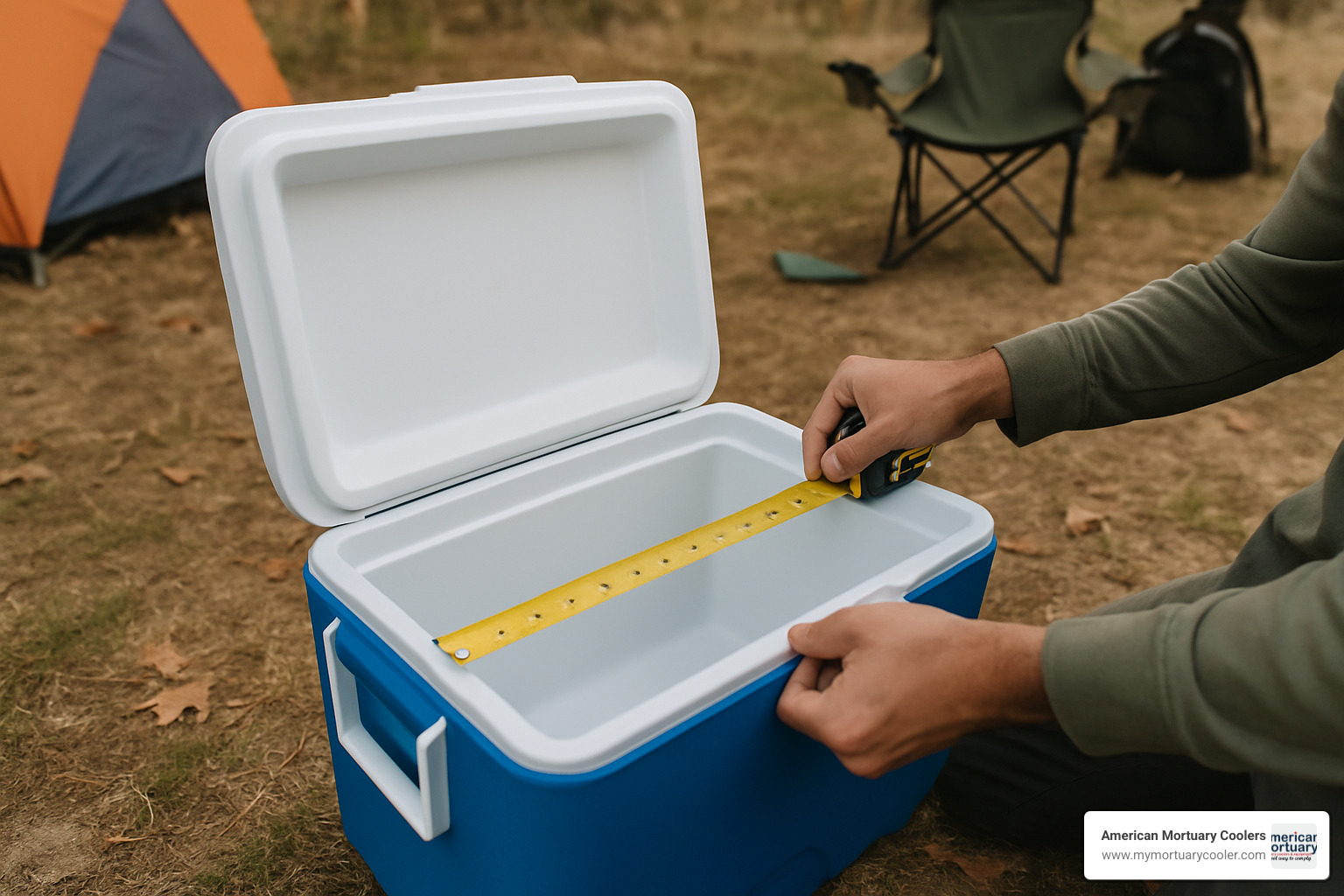
Getting the size right is where most people mess up their portable cooler purchase. Sizing isn't just about storage - it's about understanding how different cooler types work.
Sizing Your Portable Cooler
Ice coolers eat up space fast. That 50-quart cooler? About two-thirds needs to be ice for proper cooling. Follow the 2:1 ice-to-contents ratio. A family of four for a weekend needs 40-60 quarts total capacity - 20 quarts for food/drinks, 40 quarts for ice.
Electric portable coolers change the game. No ice means your entire capacity goes to storage. A 33-liter electric unit holds as much usable space as a 60-quart ice cooler.
Evaporative coolers cool air, not contents, so size based on room square footage. Divide square footage by 2.5 to get minimum CFM needs. A 500-square-foot area needs about 200 CFM. Each person adds roughly 400 BTUs per hour of heat load.
Must-Have Features Checklist
Quality gasket seals are non-negotiable. Air leaks kill efficiency faster than anything else. The seal should run continuously around the entire lid.
Proper drain plugs should be threaded so they won't pop out during transport. Some include hose attachments for draining without tilting.
Telescoping handles become essential for anything over 30 pounds. UV-resistant shells prevent cracking and fading from sun exposure. Tie-down points prevent your cooler from becoming a projectile.
Smart Extras to Consider
App integration lets you monitor battery levels and adjust temperatures remotely. Water level alerts prevent dry-running in evaporative units. Runtime scheduling maximizes efficiency by running during cooler parts of the day.
Don't let accessories distract from core cooling performance. A cooler that can't keep things cold isn't worth having, regardless of bells and whistles.
More info about body-cooler solutions covers specialized applications where precise temperature control is critical.
Pros, Cons & Energy Efficiency of Each Cooler Type
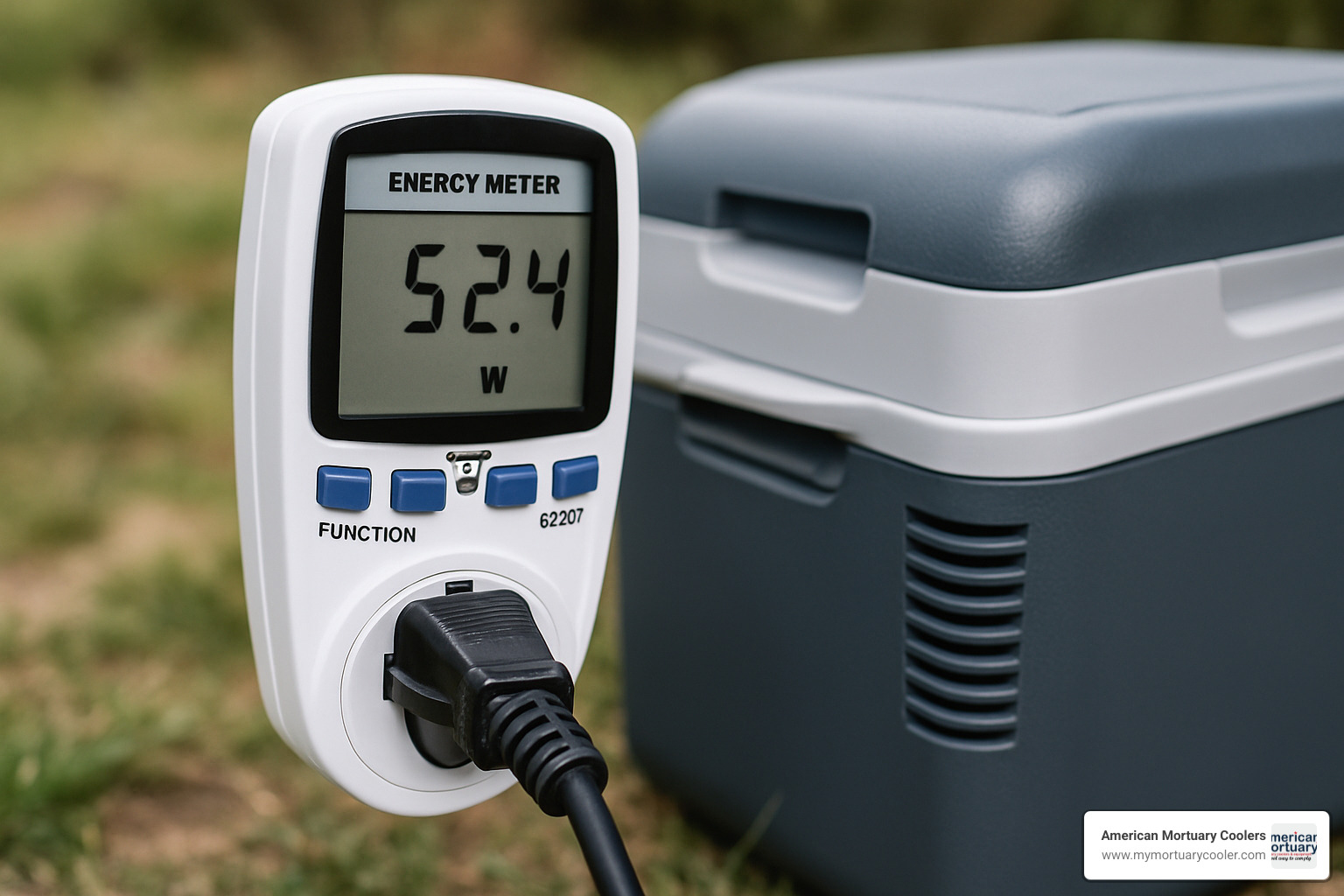
Let's be honest about what each portable cooler type does well and where they fall short.
Advantages & Disadvantages
Ice coolers are cheap to buy (starting around $30), work anywhere without power, and can keep things cold for days. You can sit on them and they're nearly indestructible. But ice melts - that gallon weighs 8 pounds and needs replacing every few days. Melted ice creates mess.
Electric coolers offer precise temperature control that ice can't match. Need something frozen at -4°F while keeping drinks at 35°F? Electric models handle both. No soggy sandwiches from melted ice. The downside? They're expensive ($400-$1,500), heavy when empty, and useless without power.
Hybrid models give you flexibility - solar charging, dual-zone cooling, and smart features. But that versatility comes with weight (often 50+ pounds) and complexity. More systems mean more potential failures.
Portable Cooler Performance in Challenging Environments
Evaporative coolers basically give up when humidity hits 60% - they need dry air to work. In humid conditions, run them at night when it's drier.
Ventilation kills more electric coolers than anything else. These units dump hot air out the back - trap that heat and they'll overheat quickly. Always leave space around vents and crack a window in vehicles.
Cross-ventilation works best - hot air out one side, cool air in the other. Block airflow and your cooler will struggle and fail.
Energy Efficiency & Cost Breakdown
Portable cooler power consumption ranges from 32 to 300 watts. That small evaporative cooler at 32 watts uses less power than most light bulbs. Electric compressor units typically draw 35-300 watts. A 45-watt unit costs about 30 cents per day - compare that to $5-10 daily for ice replacement.
Solar panels can change the game. A 100-watt panel handles most evaporative coolers during sunny hours. Electric coolers need 200-400 watts of solar capacity.
Compared to central AC costing $3-5 daily, a portable cooler runs for $0.30-2.00 per day - up to 90 percent savings.
Get fast specs on hybrid and electric models to compare energy efficiency across brands.
Using, Maintaining & Maximizing Your Portable Cooler
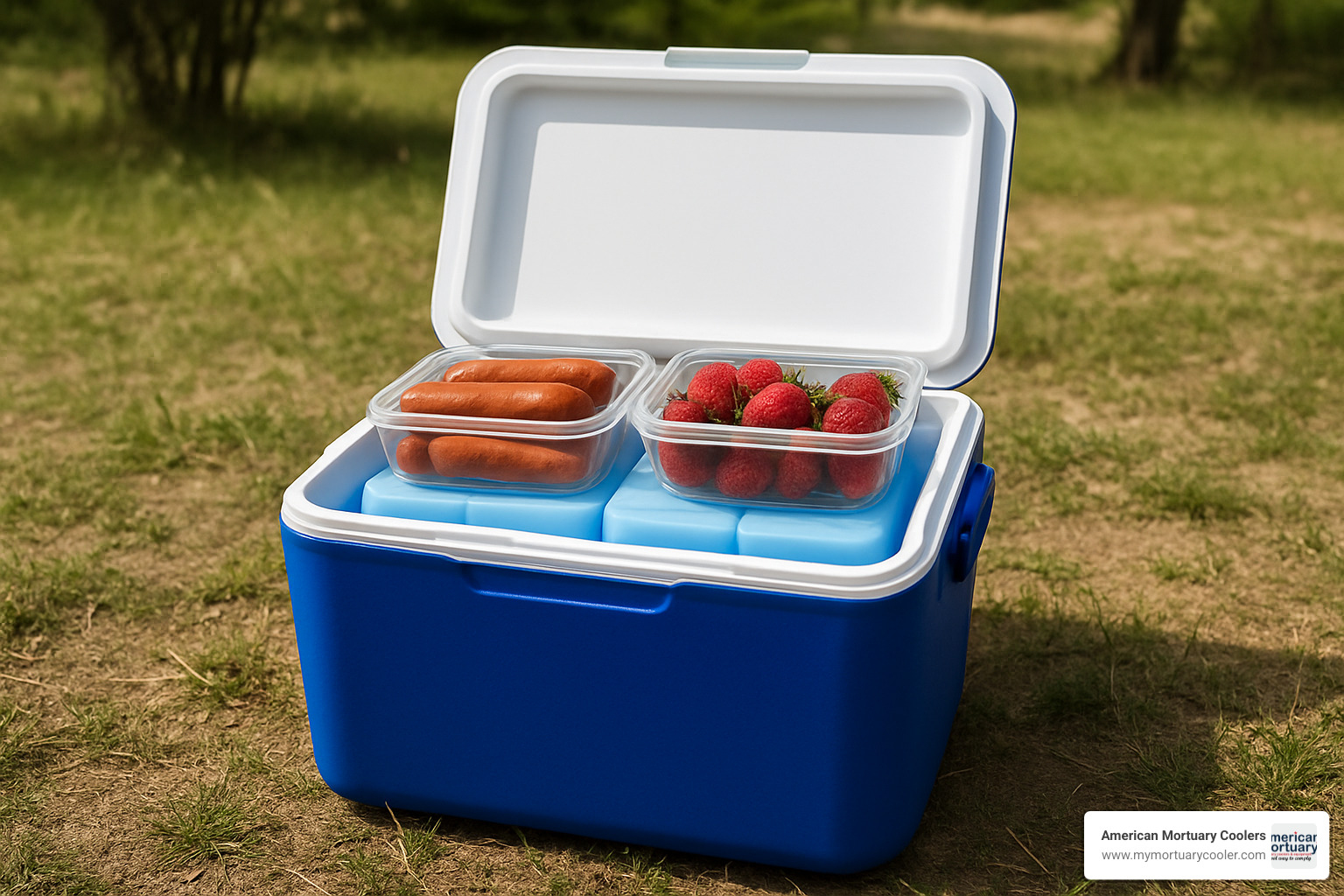
Getting the most from your portable cooler isn't complicated, but small details make huge differences.
Best Practices for Peak Performance
Pre-cooling is your secret weapon. The night before your trip, refrigerate everything. For ice coolers, add sacrificial ice a few hours before packing - it cools the interior walls.
Strategic packing follows physics: cold stuff on bottom, warmer items on top. Cold air sinks. Block ice beats cubed ice - it melts slower and doesn't create air pockets.
Lid discipline matters. Every opening throws money away. Think of it like opening your front door in winter - decide what you need before opening.
Placement strategy improves ice retention by 30-40% with just shade. Electric units need breathing room - at least 6 inches around vents.
Cleaning & Hygiene for Longevity
Mild soap and warm water handle most cleaning jobs. Skip harsh chemicals that crack gaskets. For deep cleaning, baking soda mixed with warm water (2 tablespoons per quart) cuts through almost anything.
Gasket maintenance deserves attention since seals are your first defense. Check regularly for cracks or debris. Food-grade silicone lubricant once yearly keeps them flexible.
Mold prevention is simple: never store a damp cooler. After cleaning, leave the lid open until bone dry. An open box of baking soda during storage absorbs moisture and odors.
Common Mistakes to Avoid with a Portable Cooler
Overfilling kills performance. Leave 20% empty space for air circulation. Power source problems plague electric owners - match your cooler's amp draw to adequate power supply.
Ventilation neglect kills electric coolers fast. Block vents and you'll have an expensive paperweight. Battery neglect shortens electric unit life - charge fully before storage and top off every three months.
Water quality issues affect evaporative coolers. Hard water clogs media. Use distilled water in questionable areas.
Innovations, Price Ranges, Top Brands & Alternatives
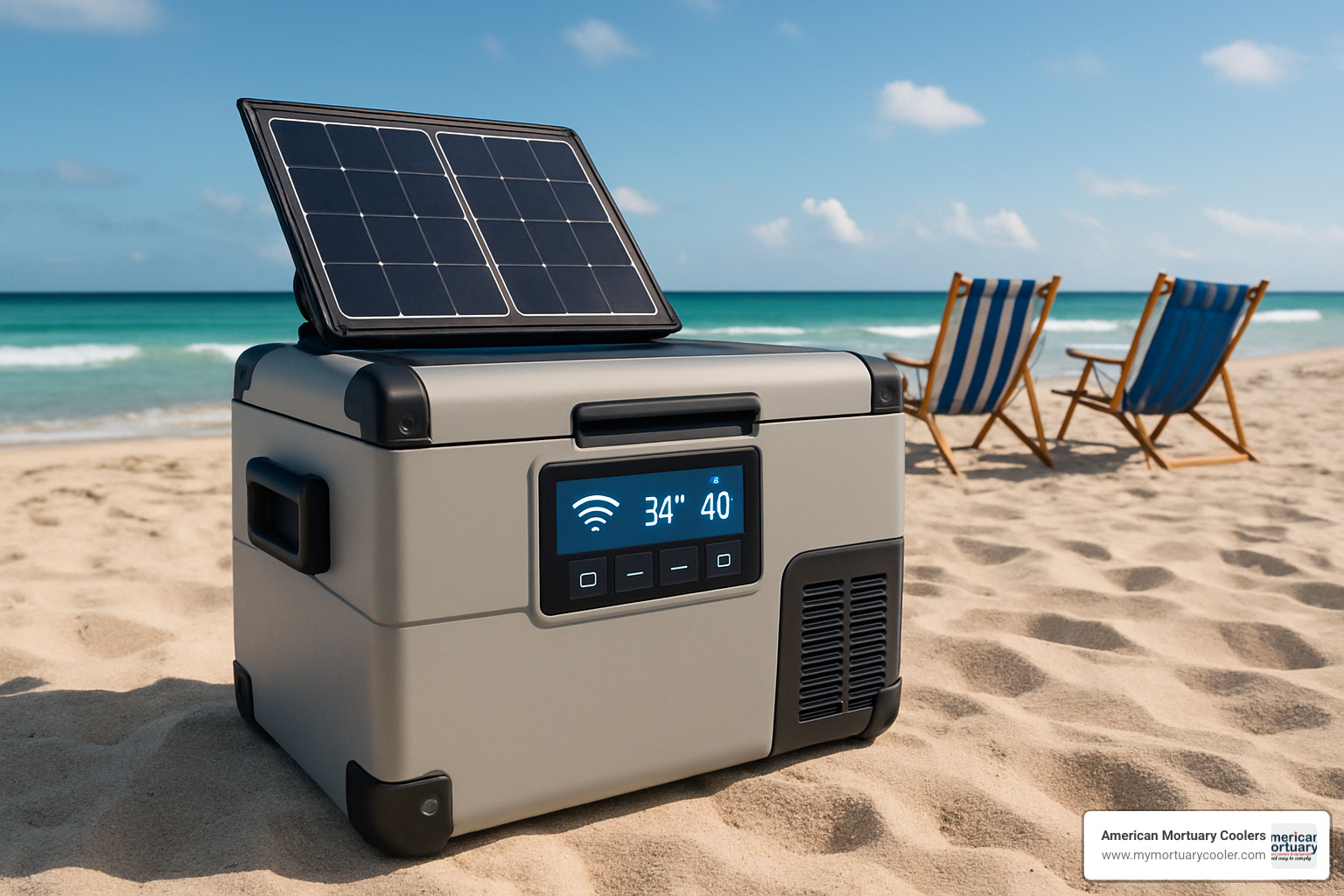
The portable cooler industry is experiencing a technological revolution, evolving from simple ice boxes to sophisticated cooling systems.
Cutting-Edge Features Hitting the Market
CoolSync™ Wi-Fi technology lets you monitor and control your cooler from anywhere with cell service. Voice control integration works with Alexa and Google Assistant for hands-free operation.
Tilt-safety shutdown protects compressors from transport damage. If your cooler tilts beyond 30 degrees, it stops automatically. Suitcase-style wheels and telescoping handles make 60-pound units manageable.
Detachable battery systems offer incredible flexibility - charge indoors via USB-C while powering through solar or vehicle outlets.
What You'll Pay
Budget hard coolers ($30-$100) offer solid construction with 2-3 day ice retention. Perfect for casual use without premium features.
Mid-range hard coolers ($150-$400) represent the sweet spot with premium insulation delivering 5-7 day ice retention, quality gaskets, and proper drainage.
Electric coolers start around $400 and climb to $900 for premium models with precise temperature control and 10-42 hour battery operation.
Premium smart coolers above $1,500 include Wi-Fi connectivity, dual-zone cooling, and solar charging. Evaporative coolers occupy the $100-$300 range for 350-3,000 square feet coverage.
Leading Models & Brand Snapshot
The GoSun Chillest represents hybrid design pinnacle - 45-liter capacity with electric cooling from -4°F to 68°F, 87Wh battery, and solar charging in a 50.6-pound package.
IcyBreeze Hybrid combines air conditioner and cooler functionality, using ice and water to deliver air up to 35°F cooler than ambient while keeping beverages cold.
Anker EverFrost offers compelling value with 299Wh battery capacity and four charging methods, including 100W solar input.
When to Choose Other Cooling Solutions
Built-in cooler units make more sense for permanent installations where mobility isn't required. Large-scale cooling needs call for walk-in units rather than multiple portable coolers.
Specialized applications in medical or mortuary settings require precision temperature control that standard portable units can't provide reliably.
A Comprehensive Guide to Portable Morgue Options covers professional cooling solutions for specialized applications.
Frequently Asked Questions about Portable Coolers
The most common questions we hear at American Mortuary Coolers come from people who want to get their portable cooler sizing and performance just right. After helping customers across all 48 states with cooling solutions, we've learned that a few key calculations can save you from expensive mistakes.
How do I calculate the right CFM or capacity for my space?
Getting the math right upfront prevents the frustration of underpowered cooling or wasted money on oversized units. For evaporative coolers, the formula is surprisingly simple - divide your room's square footage by 2.5 to find your minimum CFM needs.
So that 500 square foot workshop? You'll need at least 200 CFM, though 400+ CFM gives you the comfort level most people actually want. Don't forget about the people using the space - each person beyond two adds about 100 CFM to your requirements because we all generate heat just by being there.
For ice and electric coolers, think contents first. Plan on 1 quart of capacity per person per day as your baseline. Then add space for ice if you're going that route, plus a 20% safety margin because nobody likes running out of cold storage space halfway through a trip.
Are portable coolers effective in all climates?
This is where understanding your local weather really matters. Evaporative coolers are amazing in dry climates but struggle when relative humidity climbs above 60%. We've seen customers in Florida get frustrated with evaporative units that work beautifully in Arizona.
The good news? Even in humid areas, you can still use evaporative cooling effectively during drier nighttime hours. Some folks run them alongside their AC to extend cooling efficiency and cut electricity costs.
Ice and electric coolers don't care about humidity at all. They'll work whether you're in Death Valley or Louisiana in August. They just need more energy to fight extreme heat, so give them some shade and proper ventilation to help them out.
How energy-efficient is a portable cooler compared to AC?
The energy savings can be dramatic, but it depends entirely on what type of portable cooler you choose. Evaporative coolers are the efficiency champions, using just 7-300 watts depending on size and fan speed. That's literally equivalent to running 1-3 regular light bulbs.
Electric coolers use 35-300 watts for targeted cooling, which is still incredibly efficient compared to central air conditioning systems that gulp down 3,000-5,000 watts to cool entire houses.
For spot cooling - like keeping your workshop comfortable or chilling drinks at a tailgate - portable coolers can deliver up to 90% energy savings compared to cranking up the central AC. The secret is matching your cooling method to what you actually need rather than over-cooling spaces you're not even using.
Conclusion
Finding the perfect portable cooler comes down to understanding your situation and matching it with the right technology.
Ice coolers are reliable workhorses that keep food cold anywhere without power, but require ice runs every few days. Electric models provide precise temperature control and eliminate ice hassle, though they need power and cost more upfront. Evaporative coolers are energy-efficient for cooling spaces but require low humidity.
For day trips, nothing beats a soft cooler - lightweight and compact when empty. Weekend camping? A quality hard cooler with solid insulation keeps food safe without breaking the bank. Extended off-grid trips benefit from electric coolers with solar charging. Hot, dry climates are perfect for evaporative coolers using minimal electricity.
Final thoughts: Choose slightly more cooling capacity than needed. Quality insulation and gaskets separate coolers that last decades from seasonal disappointments. Factor in total ownership costs - that bargain ice cooler might cost more in ice over a summer than a pricier electric model costs in electricity over years.
At American Mortuary Coolers, we've spent decades working with temperature-critical equipment across all 48 contiguous states. Whether for professional applications where precision matters or family trips where keeping drinks cold is serious business, the right cooling equipment makes all the difference.
More info about choosing a portable body cooler covers specialized cooling applications where temperature control meets professional standards.
















